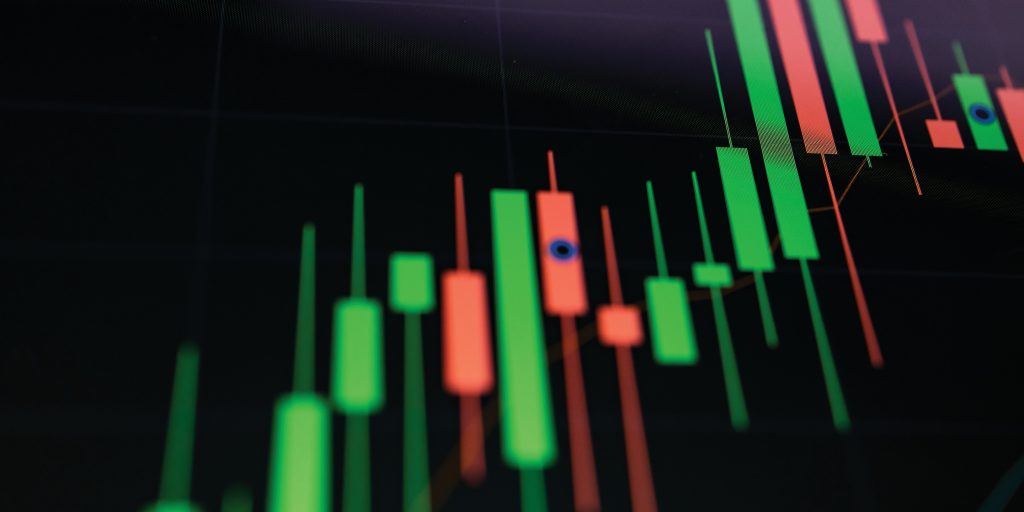Negative session start: down 0.8%
Bearish day for the Swiss Market, which begins on Tuesday, December 20 with drops of 0.8%, to 10,686.55 points, after the opening. Comparing this data with that of previous days, the Swiss Market reverses the result of the previous session when it experienced a rise of 1.01%, without being able to set a clear trend recently.
If we consider the data from the last seven days, the Swiss Market registers a decrease of 4.04%, therefore in year-on-year terms it still maintains a decrease of 15.95%. The Swiss Market is 17.41% below its maximum this year (12,939.17 points) and 6.1% above its minimum price so far this year (10,072.62 points).
Stock indices… What for?
A stock index is an indicator that shows how the value of a set of assets changes, for which it collects data from different companies or sectors of a fragment of the market.
These indicators are used mainly by the stock markets of different countries around the world and each one of them can be integrated by firms with different specificities, such as having a similar market capitalization or belonging to the same type of industry, in addition, there are some indices that only consider a handful of shares to determine their value or others that consider hundreds of shares.
Stock indices serve as an indicator of confidence in the stock market, business confidence, the health of the national and global economy, and the performance of investments in stocks and shares of a company. Generally, if investors do not have confidence, the costs of shares will tend to fall.
Likewise, they work to measure the performance of an asset manager and allow to analyze comparisons between profitability and risk; measure the opportunities of a financial asset or create portfolios.
These types of indicators began to be used at the end of the 19th century after the journalist Charles H. Dow. To carefully analyze how the shares of companies tended to rise or fall together in price, he created two indices: one that contained the 20 largest railway companies (as it was the most important industry at the time), as well as 12 shares of other types of businesses
Currently in humanity there are various indices and they can be grouped based on their location, sectors, the size of the companies or even the type of asset, for example, the US Nasdaq index is made up of the 100 largest companies mostly related to the technologies such as Apple (AAPL), Microsoft (MSFT), Amazon (AMZN), Facebook (FB), Alphabet (GOOG), Tesla (TSLA), Nvidia (NVDA), PayPal (PYPL), Comcast (CMCSA), Adobe (ADBE ).
How to read an index?
Each stock index has its own calculation method, but the main factor is the market capitalization of each company that integrates it. This is obtained by multiplying the value of the share on the corresponding stock market by the total number of shares that are in the hands of investors.
Listed firms are required to present a balance sheet of their composition. Said report must be made public every three or six months, as appropriate.
Reading a stock index also implies observing its changes over time. Current indices are always listed with a fixed value based on the stock prices on their inception date, but not all follow this method. So it can be confusing.
If one index sees an increase of 500 points in one day, while another only adds 20, it might appear that the former performed better. But, if the first started the day at 30,000 points and the other at 300, it can be derived that, in percentage terms, the gains for the second were higher.
These are the main stock indices
Among the main stock market indices in the American Union is the Dow Jones Industrial Average, better known as Dow Jones, of which 30 companies are part. Likewise, the S&P 500, which comprises 500 of the largest companies on the New York Stock Exchange. Finally, we must mention the Nasdaq 100, which links 100 of the largest non-financial firms.
On the other hand, the most important indices in Europe are the Eurostoxx 50, which covers the 50 most important companies in the euro area. Also, the DAX 30, the main German index that contains the most outstanding companies on the Frankfurt Stock Exchange; the FTSE 100 of the London Stock Exchange; the CAC 40 of the Paris Stock Exchange; and the IBEX 35, of the Spanish stock market.
In Asia, we have the Nikkei 225, made up of the top 225 companies on the Tokyo Stock Exchange. There is also the SSE Composite Index, which can be considered the most notable in China, made up of the most relevant companies on the Shanghai Stock Exchange. Similarly, it is worth mentioning the Hang Seung Index in Hong Kong and the KOSPI in South Korea.
With regard to the Latin American region, there is the IPC, which contains the 35 most influential firms on the Mexican Stock Exchange (BMV). At least a third of them are owned by tycoon Carlos Slim.
Another is the Bovespa, made up of the 50 most important companies on the Sao Paulo Stock Exchange; the Merval from Argentina; the IPSA of Chile; the MSCI COLCAP of Colombia; the IBC of Caracas, made up of 6 companies from Venezuela.
Similarly, there are other types of global stock indices such as the MSCI Latin America, which includes the 137 most important companies in Brazil, Chile, Colombia, Mexico and Peru.
Similarly, there is the MSCI World, which includes 1,600 companies from 23 developed countries; the MSCI Emerging Markets, made up of more than 800 companies from developing countries; and the S&P Global 100, made up of the 100 most powerful multinational firms on the entire planet.

